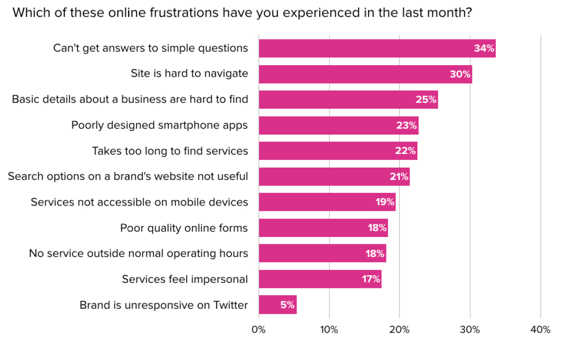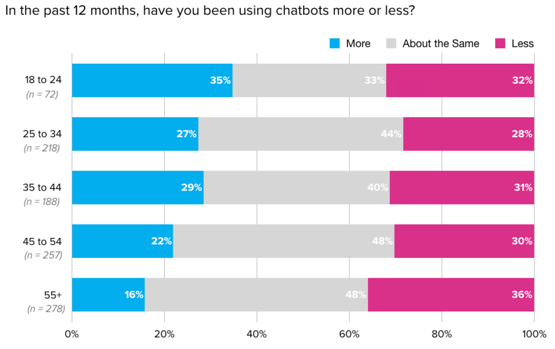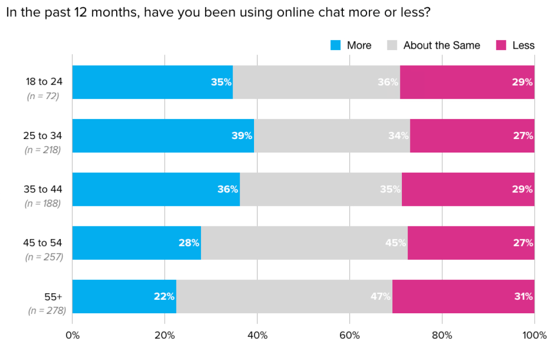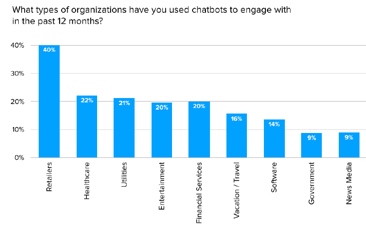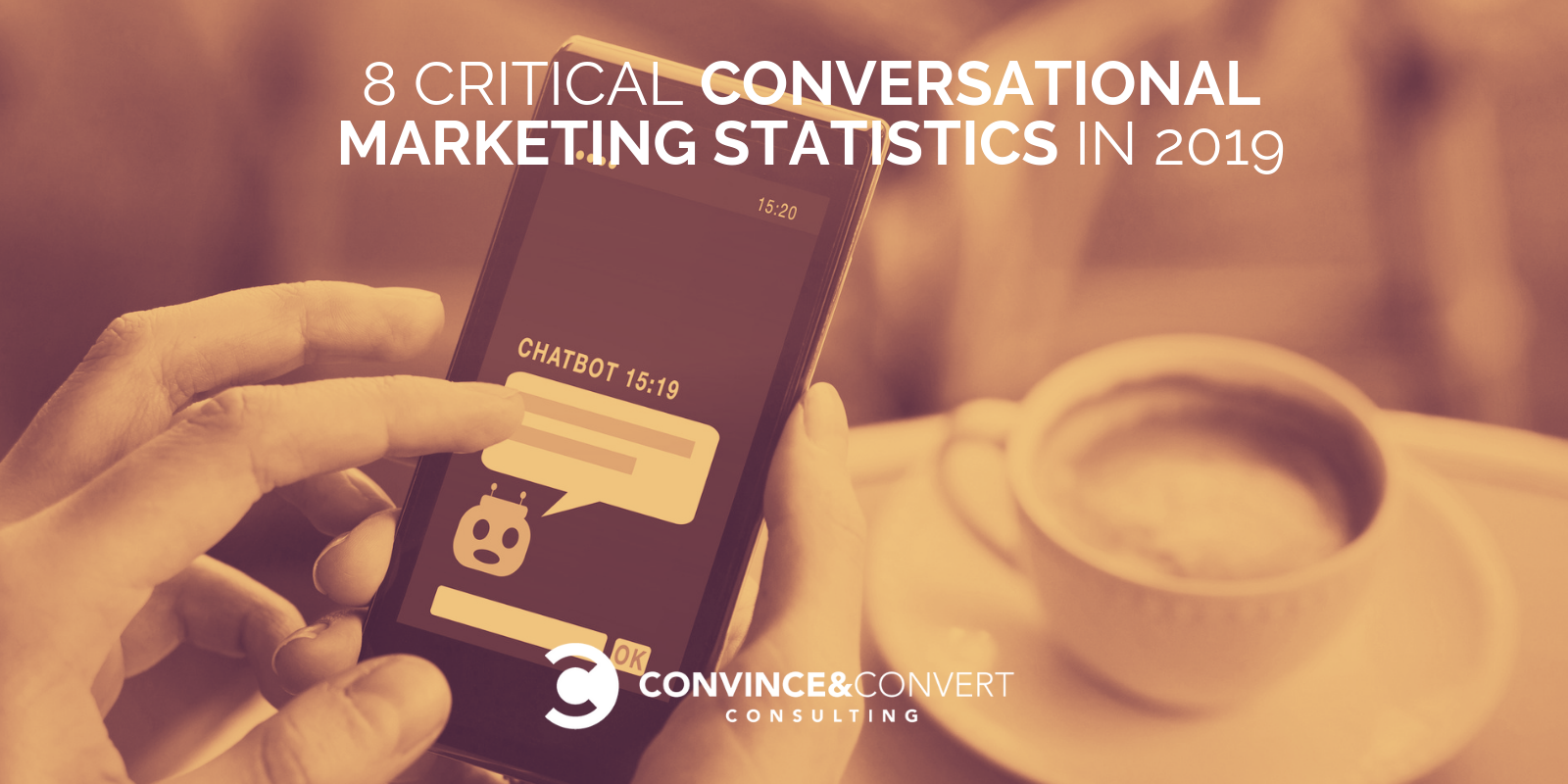
“Conversational marketing” went from a chat app here and there to a full-fledged customer experience must-have, as even the analyst firm Gartner now recognizes it as its own category of software and services.
What is conversational marketing?
Loosely defined, “conversational marketing” includes live chat, chat bots, and social chat apps (via Messenger, WhatsApp). These tools vary in their execution and technological underpinnings somewhat, but the core premise is that they make it faster and easier for customers to interact with companies.
The big variance within conversational marketing is whether the interaction site is present on the company’s Web property or on a social network/freestanding social app. Going to a website and interacting with a chatbot is a different experience than having your order confirmation delivered via Messenger. As conversational marketing matures and technology shifts, these differences will be emphasized in a more nuanced fashion.
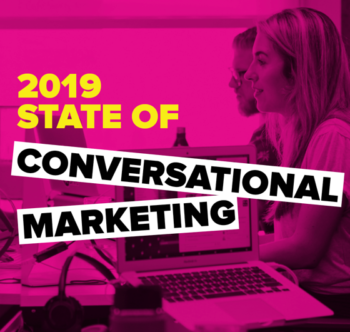 But at this point, many organizations are still pursuing their first or second foray into the conversational marketing forest, and the key question for all these initiatives is the same for us all: “Will my customers actually like and use this?”
But at this point, many organizations are still pursuing their first or second foray into the conversational marketing forest, and the key question for all these initiatives is the same for us all: “Will my customers actually like and use this?”
New research from marketing trend analysta Matthew Sweezey, Drift, and Survey Monkey aims to answer that question, at least in the aggregate. Yesterday, they published a new report, the 2019 State of Conversational Marketing.
This project surveyed 1,085 adult American consumers about their usage of and attitudes towards conversational marketing, in its various forms and guises.
I suggest you download the entire report for yourself. There is no cost to do so. I’ve read it three times, and these are the 8 conversational marketing statistics that stand out the most to me.
1. Little Things Still Frustrate Customers
When asked “which of these has frustrated you online in the past month?” answers to this conversational marketing survey showed that websites are still pretty bad at the basics. The number one source of frustration? “Can’t get answers to simple questions,” with more than one-third of adult Americans having experienced that challenge in the past 30 days.
Further, 25% of consumers say that basic details about the business are hard to find! These are straightforward information exchanges that can be addressed (and easily) with conversational marketing.
2. Online Chat Now the Fourth Most Common Interaction Type
Thirty-three percent of American adult consumers have used online chat to interact with a business in the past 12 months. This falls behind email (65%), telephone (55%), and website (42%), but puts online chat in front of social media, mobile app, chatbots, and face-to-face as a mechanism for interaction.
Thirty-three percent of American adult consumers have used online chat to interact with a business in the past 12 months. Click To Tweet3. Age of Consumer Has Little Impact on Chatbot Usage
You would think because of the nature of the technology that young people would be heavier users of chatbots (one of the core parts of the conversational marketing ecosystem). This is true, but only a little. These new conversational marketing statistics show that consumers 18-24 years old indeed are the most likely (35%) to be using chatbots more in the past 12 months.
However, when you combine “using chatbots more in the past 12 months” and “using chatbots the same amount in the past 12 months” all consumers 18-54 are essentially even.
Over the past year, 68% of 18-24 year-olds are using chatbots more, or the same. It’s 71% for 25-34 year-olds. It’s 69% for 35-44 year-olds. And 70% for 45-54 year-olds. (For consumers 55+, 64% are using chatbots more, or the same in the past 12 months).
4. Chatbot Dissatisfaction is Real
While approximately 70% of all consumers are using chatbots more or the same over the course of the past year, the number of consumers using chatbots LESS is actually greater than the group using them MORE. This indicates that a good portion of American adult consumers (approximately 1/3) have tried chatbots and then decided to use them less often.
70% of all consumers are using chatbots more or the same over the course of the past year. Click To TweetThis isn’t a huge surprise, as there are a lot of semi-useless chatbots out there. As conversational marketing gets better, the belief is that these turned off consumers will give chatbots (and other conversational marketing components) another try.
5. Online Chat is Currently More Popular Than Chatbots
Compared to chatbots, the percentage of consumers saying they are using online chat more or the same amount in the past 12 months, is slightly higher. Additionally, the ratio of survey respondents saying they are using online chat less is not as high as it is for chatbots. Important to note, however, that online chat dissatisfaction is by no means a non-issue, it’s just not as significant as for chatbots.
In a separate question in this conversational marketing survey, 39% of consumers said online chat provide a good customer experience, versus just 16% for chatbots.
39% of consumers said online chat provide a good customer experience, versus just 16% for chatbots. Click To Tweet6. Online Chat Most Convenient, Chatbots Best for 24×7 Support
In comparison to all potential interaction mechanisms, consumers view online chat as best overall for convenience, with half of all survey respondents indicating that online chat is convenient.
In the case of chatbots, they ranked best as a good source of 24×7 support. This makes sense, since chatbots are typically unmanned “bots” which can work at any day or time. Although, it should be noted here that one of the key elements of chatbot satisfaction among consumers is how well the bots “hand off” to a human once the conversation outstrips the bot’s capacity to provide answers.
7. Chatbots Are Best for Answering Questions
When asked what they find chatbots to be best used for, 34% of consumers said “answering a question”; followed by “getting detailed answers” (29%); “resolving a problem or complaint” (27%); and “receiving customer service” (27%).
8. Retailers Leading the Way on Chatbot Usage
40% of the consumers who have used a chatbot in the past 12 months have done so to interact with a retailer. This far outpaces other categories of business, including healthcare (22%), utilities (21%), and entertainment (20%).
40% of the consumers who have used a chatbot in the past 12 months have done so to interact with a retailer. Click To TweetThis makes sense, as many retailers have implemented chatbots to remove friction from the shipping confirmation process, and other steps of the standard retail customer journey.
Conversational marketing will continue to become more important for business, especially as the technologies improve, and subsequent consumer comfort increases. I do recommend you download and read the entire 2019 State of Conversational Marketing report.
